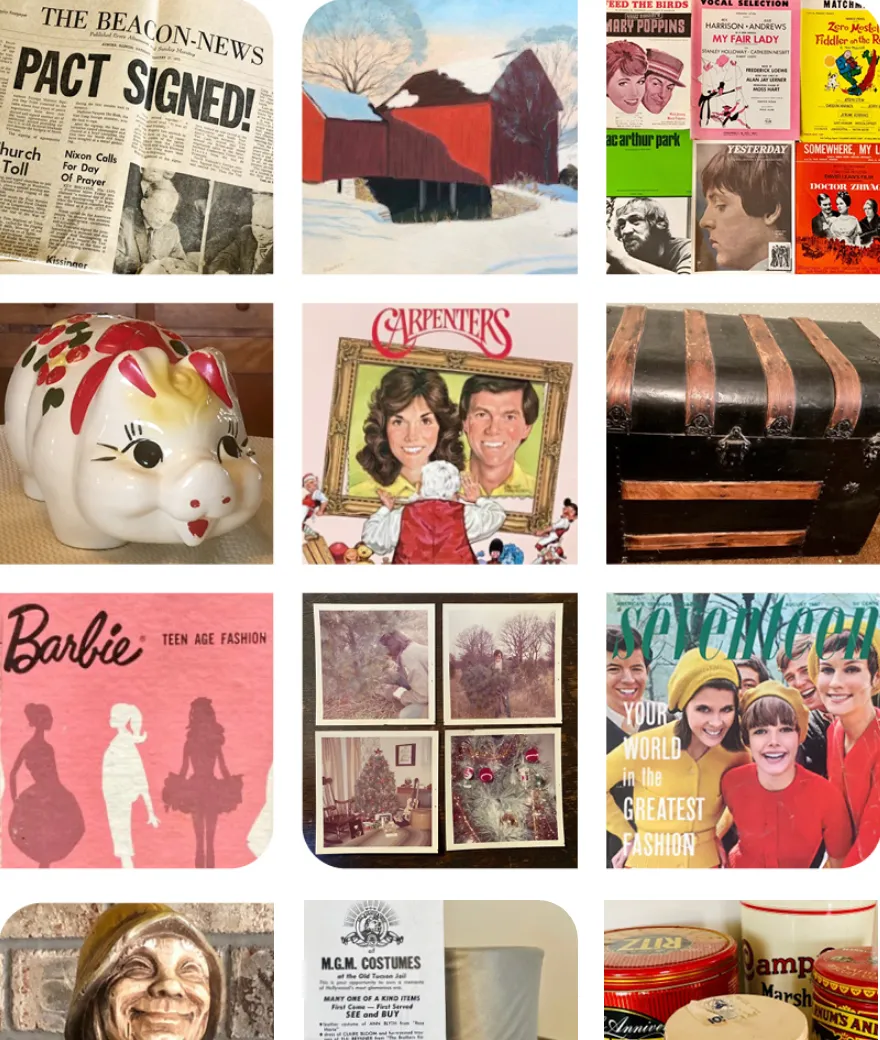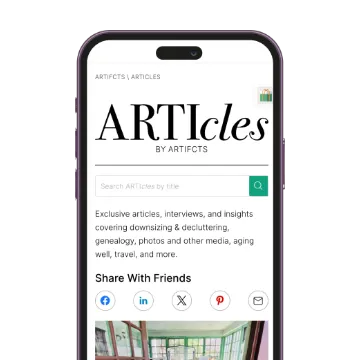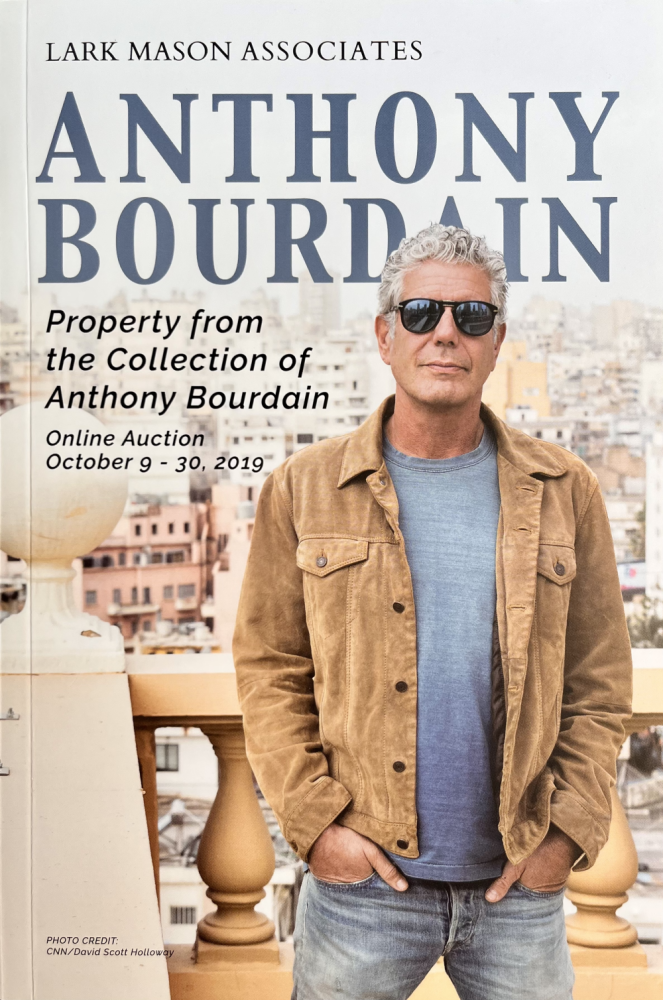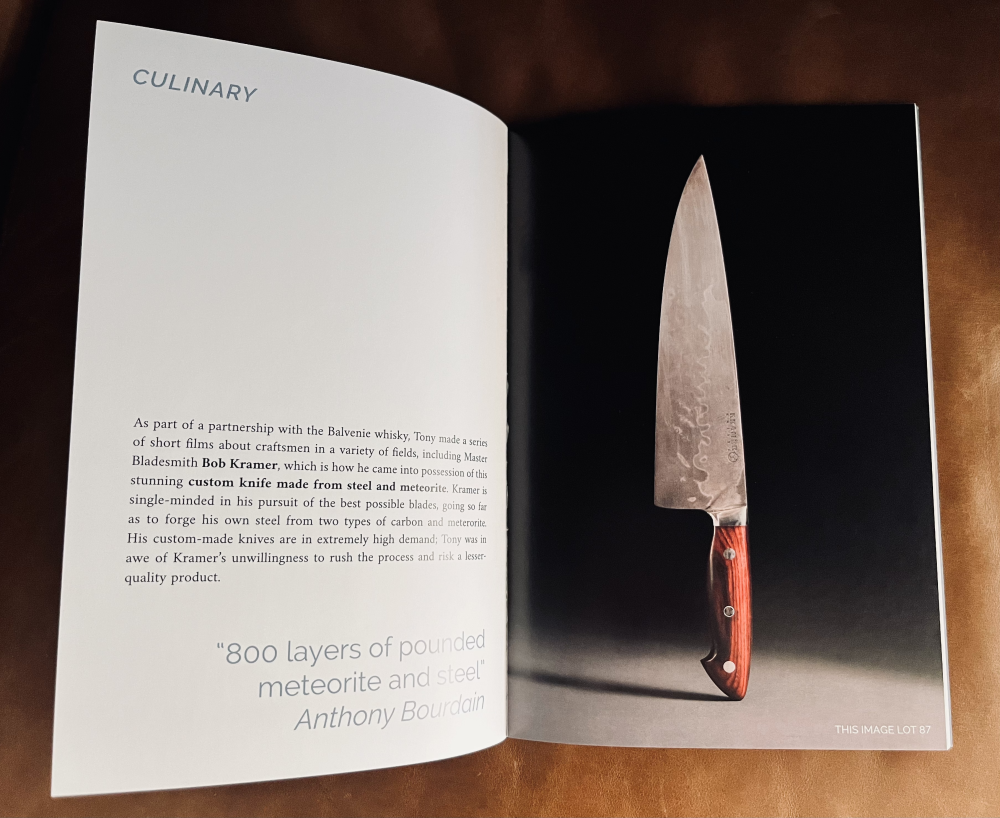If you want to elevate an item to heirloom status, Webster’s dictionary says pass it down, generation after generation.

But solidifying an object’s place in your family history requires a little more tender loving care than that alone.
For every heirloom, we recommend you:
-
-
- Preserve essential facts. What is it? How did you come to possess it? And closely related, where did it come from? Which side of the family?
- Be specific. Why should anyone care about this object? The why is critical. Why does it matter to you and your family?
- Create awareness that this object even exists. If you’ve tucked it away or added it to a shelf or cabinet, never pausing to share its origin or story, no one will be able to raise their hand to say, “Yes, I want this” when the time comes to pass it down. Instead, it will easily slide into the discard pile.
- Provide and/or transfer relevance and context. When @Grandmom’s rolls recipe from the early 1900s was reborn and brought out for everyday enjoyment engraved in her mother’s handwriting on a cutting board, a whole new generation took interest in the recipe’s origin.
These points all build up to a key conclusion: You need a story for the heirloom.
Your story might be a poignant 5 words, “My father gave me this.” And knowing you, and that your father passed away when you were only 9 years old, your family understands a lot in those 5 words.
Or your story may be much longer and follow a beginning-middle-end story arc, pulling in the reader as you evoke in them the emotional or sentimental value and appreciation for the item that you feel.
Here are two very different examples of family heirlooms and their stories, one a traditional family heirloom, the other a modern heirloom, an object acquired now that the owner hopes will last for generations more.
The knitting needles with no story
Elizabeth is a passionate genealogist. Her globetrotting, history and life loving self has seen a lot and collected even more. While her home and the mementos within may be a living testament to her fascinating life, she is also a family keeper.

Despite being a genealogist, she’s inherited heirlooms without necessarily giving much thought to their origins or their futures.
Case in a point: her beloved knitting needles. Elizabeth brought her knitting needles to an Arti Afternoon, an event with one of the founders of Artifcts during which participants share items show and tell style. Elizabeth volunteered to go first.

“I brought these, because I love them, but they don’t really have a story.”
Our co-founder Ellen nodded, encouragingly. “Objects don’t have to have deep stories to share them and Artifct them. It’s enough to let your family know you love them and what you want to do with them one day. But I have a question: What are those?”
You see, Ellen didn’t even know what the objects were that Elizabeth was holding.
With a startled laugh, Elizabeth replied, “Oh, they are knitting needles.”
“Knitting needles?” Ellen said with a questioning look.
“Yes. They’re made of whale bone.”
“Whale bone,” repeated Ellen, thinking to herself she was starting to sound like an echo.
“Yes, my Yankee grandmother lived in Connecticut and was an accomplished knitter. Hers was a whaling village. I’ve had family in that area since the early 1600s.” Elizabeth went on, “I love how the needles feel in my hands, so much nicer than plastic.”
With a smile, Ellen turned to the group, “Who here thinks these needles have no story?”
Smiles and laughs returned all around. These needles have a great story and are a sweet family heirloom and dose of national history all in one.

A 50-year-old Yugoslavian stool
From the Artifcts collection of our co-founder Ellen Goodwin.
You know the stools that students used to sit on back in the day - four fixed metal legs, a circular wooden top that spins? Picture them in a chemistry lab. Picture them in Yugoslavia, built from iron and native oak, handmade, and in the "brutalist style."
What style is that, you ask? You know brutalist style from many government buildings in the US, your travels through Eastern Europe and the former states of the USSR, and the movies. Think large cement minimalist buildings, the opposite of beautiful aesthetics. If you have a home with a lot of personality already, a splash of simplicity in the "brutalist" fashion may be just what you need. Or at least that’s how I think of it.
They say beauty is in the eye of the beholder, and that's the case here. I think it’s more fun to sit on a stool with history than a modern, lighter weight, less durable replica or alternative. You get to feel connected to another time and culture. That's what the stool means to me, a collector who is curating my home to feel uniquely us.

And if you think it’s strange to fixate on the charm or design of a stool, blame my mom. She had this really cool antique stool in a corner that always had one type of draping plant or another perched on it. I wanted something like that, that felt homey and less ordinary, I guess.
And that makes this 1970s Yugoslavian creation a keeper. Will my daughter want it ever in her home, transforming it into a modern family heirloom? Maybe. For now, it’s a stool with a story that Mom picked out.
(By the way, the fact that the company reselling the stool has an icon that's a laughing grandma smoking a cigarette amuses as much as mystifies me. And that, friends, adds further charm to my 50-year-old Yugoslavian stool.)
Ready to tell the stories of your heirlooms?

If you need some prompts to get started telling the stories of your heirlooms, we always recommend what author Jeff Greenwald taught us: Start with something true.
In the story of the knitting needles, simply answering “What is it?” was enough to unravel a story that the owner had never recognized was there all along. And now, with the story known and Artifcted, it’s exponentially more likely those needles will stay in the family.
When creating an Artifct, click the lightbulb icon in the story/description field to get other prompts and our downloadable worksheet.
Here are some other tried and true heirloom storytelling prompts from genealogist and author Deborah Holman:
-
-
- The first time I saw this object, I felt ________.
- This object reminds me of ________.
- If this object could talk, it would say ________.
- This heirloom is important because ________.
And we have a special bonus for you. Deborah has shared with the Arti Community her Heirloom Storytelling Worksheet. Download it free now.
Happy Artifcting!
###
© 2025 Artifcts, Inc. All Rights Reserved.






























